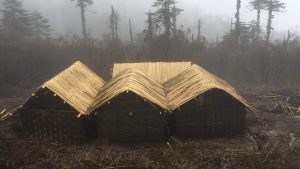The crisis in Ladakh has spurred the Indian defense forces to establish their presence in more areas along the Line of Actual Control (LAC), including in Arunachal Pradesh, a state in the country’s northeast which is claimed by China as part of “south Tibet.”
In the last three months, the Indian Army and Indo Tibetan Border Police (ITBP) have established outposts and temporary camps in inaccessible areas along the India-China border in the hill state which were earlier covered only by temporary long-range patrols.
An official said that “vulnerable stretches” along Dibang Valley, Upper Subansiri and Upper Siang districts in Aruanchal Pradesh have been covered but he declined to give details about the number of outposts that have been set up and soldiers stationed in them.
The LAC in Arunachal Pradesh is 1,126 kilometers of the total of 3,488 kilometers stretch which also spans the states of Sikkim, Uttarakhand, Himachal Pradesh and the western sector in Ladakh. China, however, considers the LAC only to be around 2,000-kilometers long.
In Arunachal Pradesh, there are six “disputed areas” and four “sensitive areas” spread across the LAC from Tawang to Anjaw district. The border at Dibang Valley is considered among the most vulnerable and inaccessible zones where patrolling has been intensified and special forces units have been deployed.
Last month, the government approved 47 new border outposts for the ITBP to step up vigil along the border. ITBP is a paramilitary outfit under the home ministry and placed under the operational command of the army.
Arunachal Pradesh has extremely poor connectivity by roads compared to other hill states in India. After the war with China in 1962, roads in the border districts of the state were deliberately not constructed by the Indian government for fear of further ingress by the People’s Liberation Army. The policies have since undergone a change with all roads projects now being expedited with firm deadlines.
Certain developments in the border regions of China contiguous to India and especially in Arunachal Pradesh have heightened New Delhi’s concerns. They include the rapid expansion of infrastructure on the Chinese side and relocation of native Tibetans.
A few days ago, Chinese President Xi Jinping issued orders to officials to expedite the construction of the $47.8 billion railway project connecting Sichuan to Linzhi in Tibet close to the Indian border in Arunachal Pradesh.
The new railway line, which starts from the capital of Sichuan province Chengdu, is the second in Tibet after the Qinghai-Tibet Railway project. According to Chinese official media, it will pass through the Qinghai-Tibet Plateau which is one of the world’s most geologically active areas.
An official who had been posted at Tawang some years ago explained that relocation of Tibetans by Chinese authorities has been intensified in the past few years under a policy called “comfortable housing,” launched in 2006. Associated with the policy are measures for permanent settlement of nomadic herders in the eastern part of the Tibetan plateau which is mostly discernible in Qinghai province.
“Figures available with the Indian government suggest that close to 2 million people accounting for almost two-thirds of the entire population of Tibet Autonomous Region (TAR) were moved into new houses between 2006 and 2012,” he claimed, adding that “The pattern is clearly visible in Cona County opposite Kameng Area of Arunachal Pradesh where a false narrative of development is being peddled by the Chinese authorities.”
Beijing asserts that relocation of Tibetan communities has been voluntary, a claim contested by many researchers who feel that the movement is motivated by political agenda.
Rajeev Bhattacharyya is a senior journalist in Assam, India

































